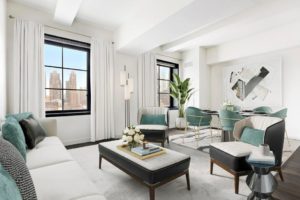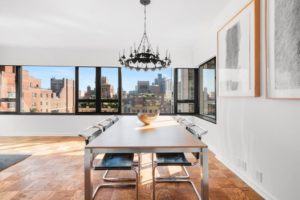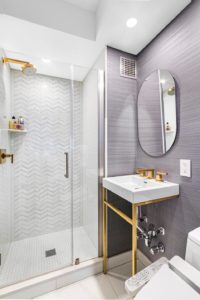What the History of the U.S. Housing Market Says About the Current Boom
Back in the 1930s and ’40s, many American homes more resembled Lincoln’s birthplace than today’s McMansions.
In 1936, Barron’s wrote of efforts by General Electric and Westinghouse to persuade thousands of dirt-poor families to electrify their homes and farms and leave the Dark Ages behind.
Clarence Barron himself was born into a home without electricity, back in 1855, though by 1925 our founder lived in one of Boston’s grandest mansions. And he was predicting that “this country is in for an era of upbuilding and expansion never before dreamed of.”
Said Barron: “I have had doubts for some time whether as a nation we were home builders or automobile buyers,” concluding that “we are doing both, which is phenomenal.” Barron was right, but that era of upbuilding and expansion was cut short by the crash of 1929 and Great Depression, which cast millions into poverty.
New Deal initiatives such as the Tennessee Valley Authority lifted many out of impoverishment and into the world of modern conveniences, such as indoor plumbing. But the big change came, as with so much of American life, after World War II.
Bill Levitt’s plan was to build 1,000 rental homes for returning soldiers on the GI Bill. The identical, mass-produced bungalows, with modern kitchens and appliances, constructed on potato fields some 30 miles east of Manhattan, “were snapped up eagerly,” Barron’s wrote in 1952. Then another 1,000 rental units were snapped up, as were many thousands of others for sale.
“Year after year, the sprawling development, straddling and winding around a good many already existing properties, outgrew the builders’ original expectations,” we wrote. Before long, Levittown—as it became known—constituted 17,500 homes and set the template for suburbia and the American Dream.
With Clause 25 of the lease agreement, which barred occupation by anyone not of the “Caucasian race,” Levittown also set a template for government-approved segregated housing.

Seven more Levittowns were built, and many thousands of housing developments like it sprang up across America, turning the U.S. into a nation of homeowners, with the ownership rate rising to 61.9% in 1960 from 43.6% in 1940.
Along with the attendant sprawl—strip malls, gas stations, fast-food joints—came home prices that seemed to defy gravity.
By 1979, the average house cost about $70,000, compared with a $2,500 Depression low, according to Barron’s. “Price acceleration,” we wrote, had assumed “the characteristics of a full-fledged mania,” comparable to the stock market “mania that led to the 1929 crash.”
For one analyst, the message was clear. “The top of the real estate market is approaching,” wrote Charles D. Kirkpatrick II in 1979, recommending that “investors start liquidating holdings.”
He wasn’t the only doomsayer. In 1988, Stan Salvigsen of Comstock Partners warned of a coming “collapse” in real estate prices due to a “tremendous buildup of credit.” And in 2005, Yale University economist Robert Shiller told Barron’s, “The home-price bubble feels like the stock market mania in the fall of 1999, just before the stock bubble burst in early 2000.”
While each of these warnings was followed by a housing market correction, those who resisted the call to sell and held on to their property were rewarded handsomely.
For instance, the median sale price for U.S. homes when Schiller warned of a bubble in the second quarter of 2005 was $233,700, according to Federal Reserve data. Prices would peak at $257,400 two years later before bottoming at $208,400 in the first quarter of 2009, in the wake of the subprime-mortgage crisis.
Yet prices would recover fully by 2013, and as of the second quarter of this year, the median price was $374,900, driven in part by a virus-related flight from cities.
The housing market may “cool a bit after a sizzling summer of sales,” Barron’s wrote in June, but “there’s plenty of pent-up demand from first-time buyers and others aiming to take advantage of historically low rates.”
In other words, don’t bet against housing just yet.
Origination: https://www.barrons.com/articles/things-to-know-today-51629714452























